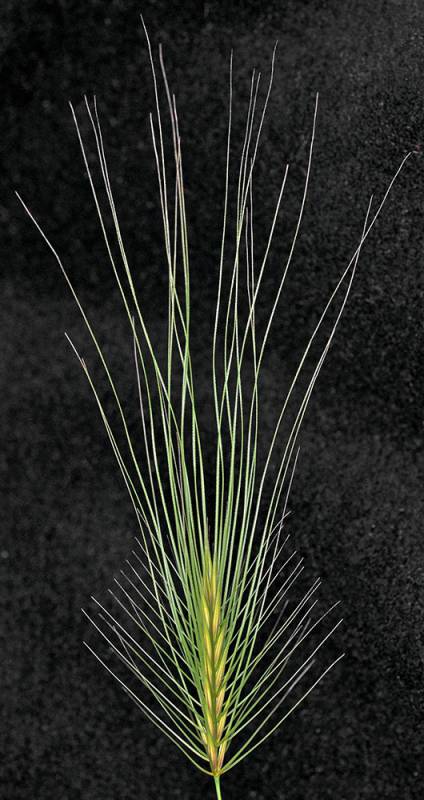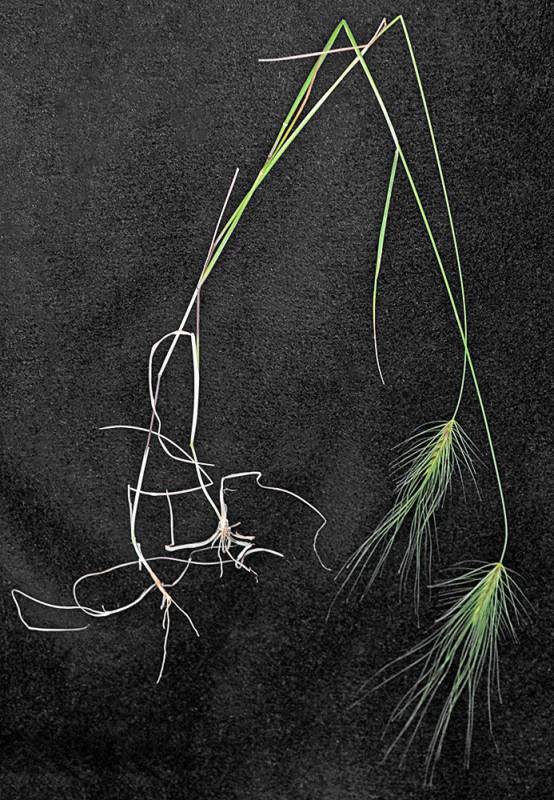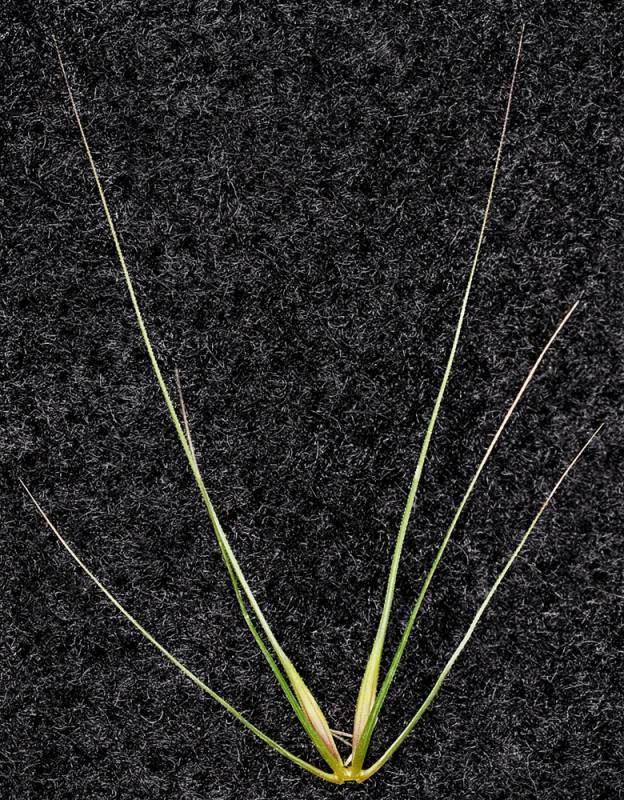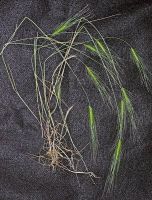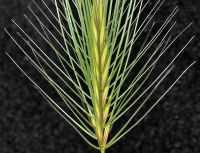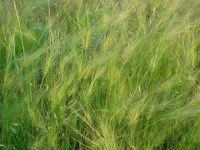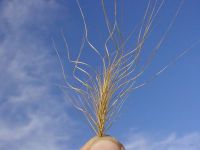Distribution: Occurring east of the Cascades crest in Washington; Washington to California, east to the Rocky Mountains; also in eastern North America.
Habitat: Sagebrush desert, fields, roadsides, wastelots, and other disturbed areas.
Flowers: April-June
Origin: Introduced from Eurasia
Growth Duration: Annual
Conservation Status: Not of concern
Pollination: Wind
Usually puberulent annual, the stems 2-6 dm. tall.
Sheaths open; auricles well-developed; ligules membranous, 0.5 mm. long; blades short, 1-1.5 mm. broad, the margins with conspicuous long, stiff hairs.
Inflorescence a spike 2-5 cm. long; spikelets usually 2 per node, crowded, with 1 perfect flower, the rachilla prolonged with a vestige of a second flower; glumes very narrow, stiff, tapered to a slender awn up to 3 cm. long; lemmas scabrous, 3-nerved, 5-7 mm. long, with a strong, flattened awn 3-10 cm. long.
Publication: Trudy Sredne-Aziatsk. Gosud. Univ., Ser. 8b, Bot. 17: 38. 1934.
Taeniatherum asperum (Simonk.) Nevski
PNW Herbaria: Specimen records of Taeniatherum caput-medusae in the Consortium of Pacific Northwest Herbaria database.
WA Flora Checklist: Taeniatherum caput-medusae checklist entry.
OregonFlora: Taeniatherum caput-medusae information.
E-Flora BC: Taeniatherum caput-medusae atlas page.
CalPhotos: Taeniatherum caput-medusae photos.
USDA Plants: Taeniatherum caput-medusae information.

